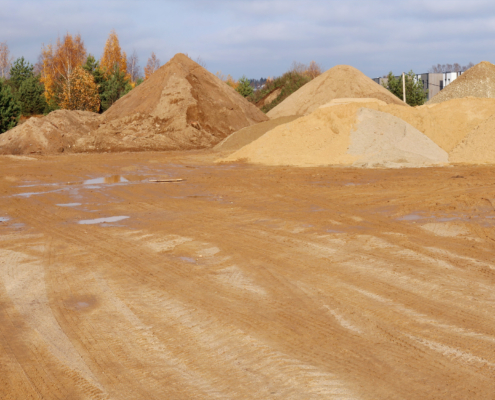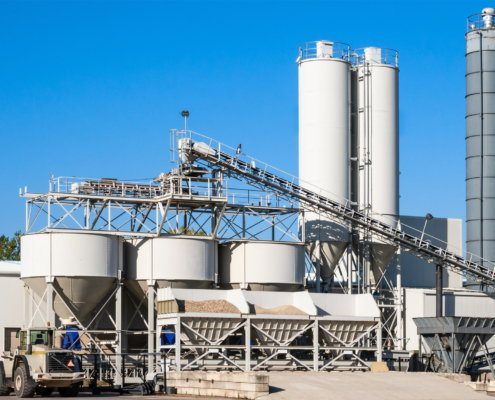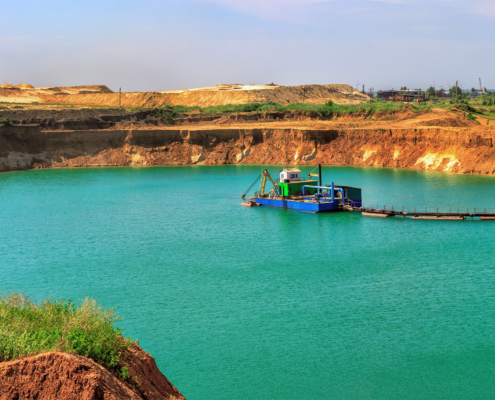 https://pontotocsandandstone.com/wp-content/uploads/2025/06/How-to-Choose-Between-Uncoated-and-Resin-Coated-Frac-Sand-for-Your-Operations.jpg
1250
2000
AbstraktMarketing
/wp-content/uploads/2021/08/Pontotoc-White-Logo.png
AbstraktMarketing2025-06-26 13:10:012025-07-01 16:14:32How to Choose Between Uncoated and Resin-Coated Frac Sand for Your Operations
https://pontotocsandandstone.com/wp-content/uploads/2025/06/How-to-Choose-Between-Uncoated-and-Resin-Coated-Frac-Sand-for-Your-Operations.jpg
1250
2000
AbstraktMarketing
/wp-content/uploads/2021/08/Pontotoc-White-Logo.png
AbstraktMarketing2025-06-26 13:10:012025-07-01 16:14:32How to Choose Between Uncoated and Resin-Coated Frac Sand for Your OperationsThe Environmental Impact of Frac Sand Processing
Sand mining is a key component of many oil and gas operations, providing vital raw material for hydraulic fracturing and other activities. While sand mining has carried with it a certain degree of environmental impact in the past, it is now possible to reduce those impacts through more efficient technologies and processes. This article will discuss some of the ways that frac sand processing and mining can provide positive environmental effects. We’ll also walk through sand processing basics. Let’s dive in!
What Is Frac Sand?
Frac sand is a special type of sand that is typically composed of quartz particles. Its high silica content makes it incredibly durable and resistant to fracturing. Its angular shape helps to keep the particles tightly packed together, making it an ideal material for hydraulic fracturing operations. Frac sand has an average particle size of between 40 to 100 mesh, meaning it’s small enough to be suspended in the fluid used during the process.
What Is Frac Sand Used For?
Frac sand has many different uses within oil and gas operations. It’s most commonly used in hydraulic fracing, where it serves as a proppant that helps keep fractures propped open after fracking fluid is injected into them. This allows natural gas to escape from shale formations more efficiently, increasing the amount of gas that can be recovered from a single well. Frac sand is also used as a filtration medium during various oil and gas production stages. It removes impurities from fluids before they are released into the atmosphere or re-injected into shale formations for storage.
An Overview of Frac Sand Processing
- Frac sand processing starts with mining it from deposits near oil and gas fields.
- The mined frac sand is transported to specialized equipment for washing and separating particles based on size and density.
- Dust or impurities are eliminated through multiple rounds of drying and screening processes.
- The goal is to obtain clean, usable grains of frac sand.
- The processed frac sand is loaded onto trucks and transported to nearby oil and gas fields.
- It is ready for use in hydraulic fracturing operations.
The Environmental Effects of Sand Mining
Advancements in technology are allowing for more efficient and sustainable methods of extracting and processing frac sand for oil and gas operations. One example is dry-washing technology, which uses a low volume of water combined with an advanced suction system to recover more frac sand than traditional wet systems. This reduces water usage by up to 80%.
Additional engineering advances, like automated production lines, help make the process faster while simultaneously lowering energy costs associated with production and reducing noise pollution at sites where these systems are used.
Air Quality
Reduced Emissions of Sand Mining Operations
As any oil and gas operation knows, sand mining operations’ emissions can negatively affect air quality. But with improved technologies and processes, it is now possible to reduce those emissions significantly. For example, more efficient mining practices mean fewer vehicles are needed to carry out the required activities. This reduces the amount of diesel exhaust released into the atmosphere and improves air quality around the site.
Reduced Dust Generation Through the Transportation of Frac Sand
The transportation of frac sand is another factor that can impact air quality. As sand is transported to and from the sites, there is potential for dust generation along the way. However, by using specialized trailers or tanks designed to limit dust generation during transportation, it is possible to reduce this issue considerably. Employers should provide training for all personnel involved in transporting frac sand so that they understand how to properly handle it to limit any air contamination that could occur along the journey.
Water Quality
Improved Surface Water Quality
The improved surface water quality that comes with frac sand mining is primarily thanks to the fact that it is much cleaner than other types of mining processes. With carefully selected and processed sands, operations can reduce the amount of wastewater and sediment discharged into surrounding areas. Frac sand mining can also help reduce levels of phosphorus and nitrogen in surface water by allowing for more efficient filtration processes.
Reduced Groundwater Pollution
Frac sand mining works to reduce groundwater pollution, making it a valuable resource. As with surface water, careful selection and processing of sands allow for better filtration of pollutants than traditional methods. This helps reduce sedimentation and chemical contamination during extraction activities, leading to cleaner groundwater supplies.
Some operations employ green practices, such as using water reclamation systems or closed-loop systems, which further reduce the environmental impacts associated with water usage from their operations.
Having the right frac sand processing materials is crucial, but it also pays to work with a provider that can provide positive benefits to the environment. Check out this article to learn how to choose a good frac sand partner.
The Importance of Quick Sand Hauling
Hauling sand efficiently is a must for any fracing operation. That’s why we offer an innovative seven-minute loading process, making hauling sand back to your facility effective.
- Trucks entering our facility receive automated bills of lading based on their license plate numbers.
Upon arrival, the driver’s license plate is scanned to access the cargo manifest. - Drivers proceed to the designated building and join the pickup line for the loading process based on the required mesh type.
- Our facility eliminates manual sand loading, allowing drivers to remain in their seats while our employees set up their trucks for loading.
- Machines fill the vehicles with sand, reducing loading time to approximately seven minutes.
After filling, the truckload is weighed at our check station. - Once the check process is complete, the driver receives approval from a Pontotoc representative.
- Our automated system streamlines ordering, dispatching, hauling, tracking, and data acquisition, ensuring ease and safety as drivers remain in their trucks.
- For transportation, Pontotoc Sand & Stone offers commercial truck delivery, railway or train car transportation, and even barge or waterway delivery.
Pontotoc Sand & Stone: An Industry-Leading Provider of Quality Frac Sand Processing Materials
At Pontotoc, our dedication to sustainability is evident in our initiative to reclaim almost all the water utilized in our processes. Our load times are also unbeatable, significantly reducing emissions and limiting dust compared to more traditional processes. Contact us today for environmentally friendly and efficient frac sand processing.
Related Postings
 https://pontotocsandandstone.com/wp-content/uploads/2025/06/How-to-Choose-Between-Uncoated-and-Resin-Coated-Frac-Sand-for-Your-Operations.jpg
1250
2000
AbstraktMarketing
/wp-content/uploads/2021/08/Pontotoc-White-Logo.png
AbstraktMarketing2025-06-26 13:10:012025-07-01 16:14:32How to Choose Between Uncoated and Resin-Coated Frac Sand for Your Operations
https://pontotocsandandstone.com/wp-content/uploads/2025/06/How-to-Choose-Between-Uncoated-and-Resin-Coated-Frac-Sand-for-Your-Operations.jpg
1250
2000
AbstraktMarketing
/wp-content/uploads/2021/08/Pontotoc-White-Logo.png
AbstraktMarketing2025-06-26 13:10:012025-07-01 16:14:32How to Choose Between Uncoated and Resin-Coated Frac Sand for Your Operations https://pontotocsandandstone.com/wp-content/uploads/2025/06/How-Frac-Sand-Storage-Affects-the-Quality-and-Efficiency-of-Your-Fracing-Operations.jpg
1250
2000
AbstraktMarketing
/wp-content/uploads/2021/08/Pontotoc-White-Logo.png
AbstraktMarketing2025-06-26 12:59:152025-07-01 16:14:32How Frac Sand Storage Affects the Quality and Efficiency of Your Fracing Operations
https://pontotocsandandstone.com/wp-content/uploads/2025/06/How-Frac-Sand-Storage-Affects-the-Quality-and-Efficiency-of-Your-Fracing-Operations.jpg
1250
2000
AbstraktMarketing
/wp-content/uploads/2021/08/Pontotoc-White-Logo.png
AbstraktMarketing2025-06-26 12:59:152025-07-01 16:14:32How Frac Sand Storage Affects the Quality and Efficiency of Your Fracing Operations https://pontotocsandandstone.com/wp-content/uploads/2025/05/Reasons-Why-Locally-Sourced-Frac-Sand-Saves-You-Time-and-Money.jpg
1250
2000
AbstraktMarketing
/wp-content/uploads/2021/08/Pontotoc-White-Logo.png
AbstraktMarketing2025-05-29 18:31:122025-07-01 16:14:33Reasons Why Locally-Sourced Frac Sand Saves You Money and Time
https://pontotocsandandstone.com/wp-content/uploads/2025/05/Reasons-Why-Locally-Sourced-Frac-Sand-Saves-You-Time-and-Money.jpg
1250
2000
AbstraktMarketing
/wp-content/uploads/2021/08/Pontotoc-White-Logo.png
AbstraktMarketing2025-05-29 18:31:122025-07-01 16:14:33Reasons Why Locally-Sourced Frac Sand Saves You Money and Time